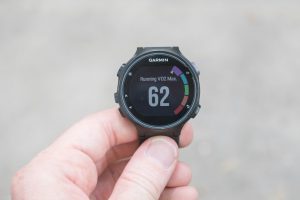Some managers accompany their reps on calls to observe the rep in action. However, these "ride-alongs" fail for two reasons:
- Most managers cannot avoid "rescuing" their rep when they get into trouble
- More importantly, the presence of the manager causes the rep to behave differently and the observation yields inaccurate or misleading feedback
 |
| Image by Erik Aavatsmark via New York Magazine |
More importantly, how...and when...should we focus on improving behavior?
Current approaches to both measuring and improving behavior are inadequate
Typical measurements provide a "look-back" at what happened, with no direct connection between measurement and improvement techniques. Even with good performance and success metrics that accurately measure sales effectiveness, efficiency, pipeline coverage and velocity, close rates, customer satisfaction and retention, we are largely collecting trailing indicators.
Today we act on those trailing indicators. We build hypotheses of why things happened the way they did, modify the environment in some way (different content, better coaching, etc.) and wait for new trailing metrics to reflect changes in performance.
Unfortunately, this process spans multiple sales quarters and opportunities. There's no immediate feedback loop between action, result, correction, new action, new result...and without that immediate feedback, the repeated behavior is reinforced rather than corrected.
The best time to make a course correction is before you're seriously off course
When sailing a boat or riding a bike, the best time to make a correction is before you run ashore or fall over. Sailors and cyclists make dozens of tiny, imperceptible corrections -- small movement of the tiller or angle of the front wheel -- all the time, without conscious thought.
For sales enablement to be effective, we need to be able to measure the success (or performance) of the rep as he or she is engaging with a prospect or client and act on that information in realtime, with corresponding small, timely course corrections.
What we need is "in situ" measurement and sales enablement -- delivered in place, at time of action. Perhaps a "sales Fitbit" that provides realtime feedback and guidance. Measurement, feedback and course correction as the rep is doing his or her job.
 |
|
Similarly, we need to be able to measure the effectiveness of a rep as he or she is engaging with a customer. The following are some of the "realtime" measurements we need to monitor:
- Is the rep following a thought-out path of engagement?
- Is the communication in line with the customer's business needs, language of value, results expected?
- Is the rep connecting at the right level in the organization?
- How responsive is the customer?
- How timely is the rep in following up?
- Is the engagement moving along an expected path, at an appropriate pace?
Some Good News
Companies that implement a "sales Fitbit" approach of monitoring & improving sales activity see immediate, substantial and persistent improvement in customer engagement, revenue and other results. Conversation conversions double or triple. Outbound contacts double. One company saw margins increase by 25% in four months.
This in situ approach doesn't work for all companies. It requires sales organizations to revisit their messaging and to trust their sellers to learn as they go. For companies that are interested, a proof of concept will give quick feedback on whether the approach has broad applicability.
Thanks!
Lee

No comments:
Post a Comment